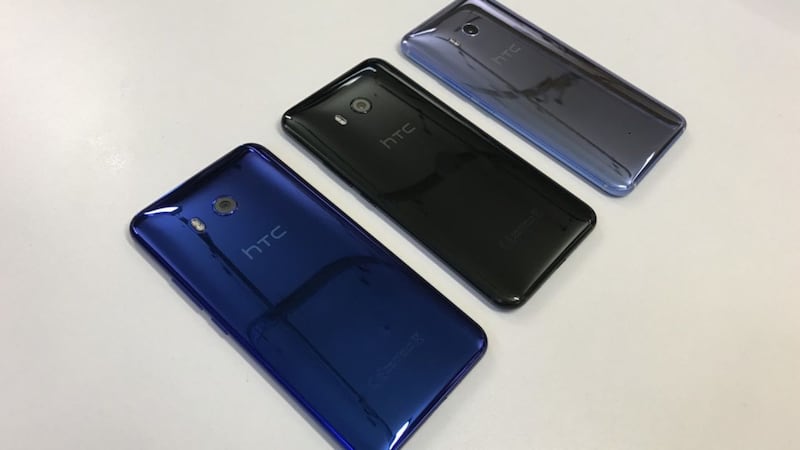The new HTC U11 may grab headlines because it’s a “squeezable” smartphone, but there is more to this device than just a smart grip.
The U11 can also make a strong claim for being one of the most intelligent phones out there thanks to its hosting of not just Google Assistant but also Amazon’s Alexa, and the company’s own Sense Companion AI to boot.
Not only that, but there’s also a fine rear camera and high resolution selfie camera if that’s more your sort of photo.
At first glance then this is a statement device from a company in need of such a moment – HTC has fallen well behind Samsung and Apple in recent years. Could the U11 be the start of a change in the tide?
Looks
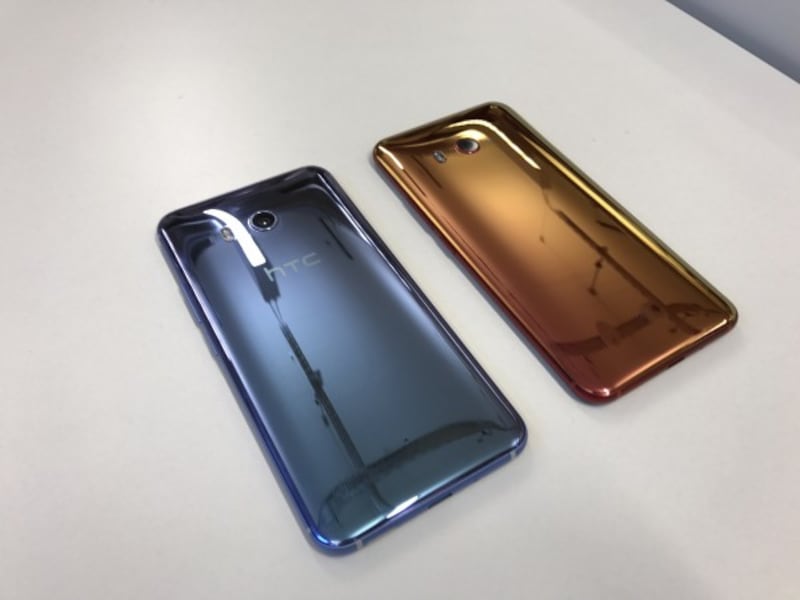
The U11 is encased in what HTC calls its “liquid glass” design – layered glass and colours across the back cover change the hue of the device as it moves in the light.
It may sound an excessive level of detail, but the impact is profound.
Each of the five U11 finishes we’ve seen has hidden colours within that appear as you move the device in your hand and catch the light on the surface in different ways.
Liquid surface of the HTC U 11 – @htc @HTCelevate – #HTCLaunch #ElevateU #HTCU11 – https://t.co/YBjbf1YVYC pic.twitter.com/SR9iFK0A7a
— HTC Bro ?? (@htcbro) May 16, 2017
It’s actually slightly mesmerising as you realise the “amazing silver” finish actually has lots of blue in it, and some pink and purple too. It almost becomes several different phones as you look at it in different lighting. In short it’s different, and stands out, and that’s a refreshing change from the gloss and matte finishes that tend to dominate smartphone design. Elsewhere on the U11 are the design touches you’ll be very familiar with if you’ve used an HTC before – subtle antenna lines, curved edges and a uniform front face that make for a clean and tidy-looking smartphone.
Edge Sense
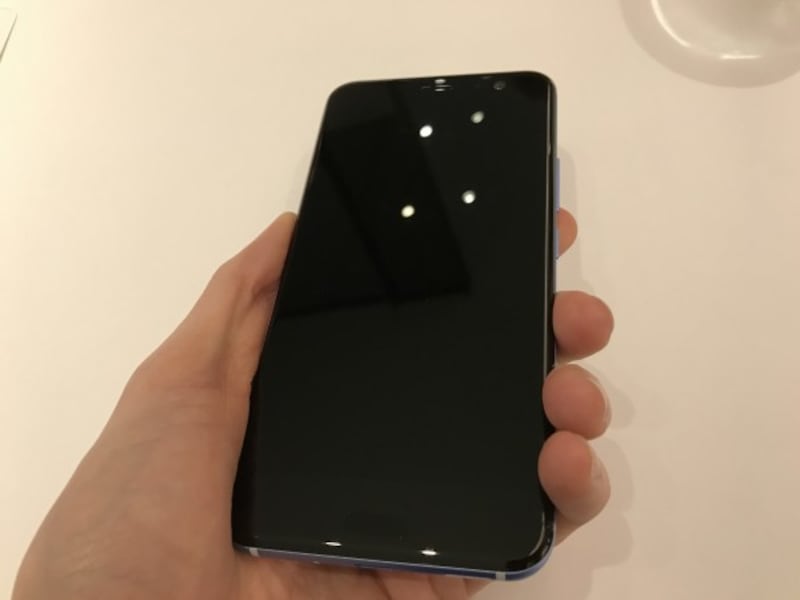
The signature feature of the U11 though of course is its squeezability thanks to Edge Sense.This is powered by four sensors embedded down each side of the device. It doesn’t affect the look of the U11 at all, but clutch the phone in your hand and squeeze and this new way of interacting with your phone suddenly leaps to life, complete with a little vibration when you squeeze.The default setting upon first using Edge Sense is one short squeeze launches the camera, a second squeeze takes a photo. A longer squeeze – a second or so – opens Google Assistant. However, this is just scratching the surface of the feature.
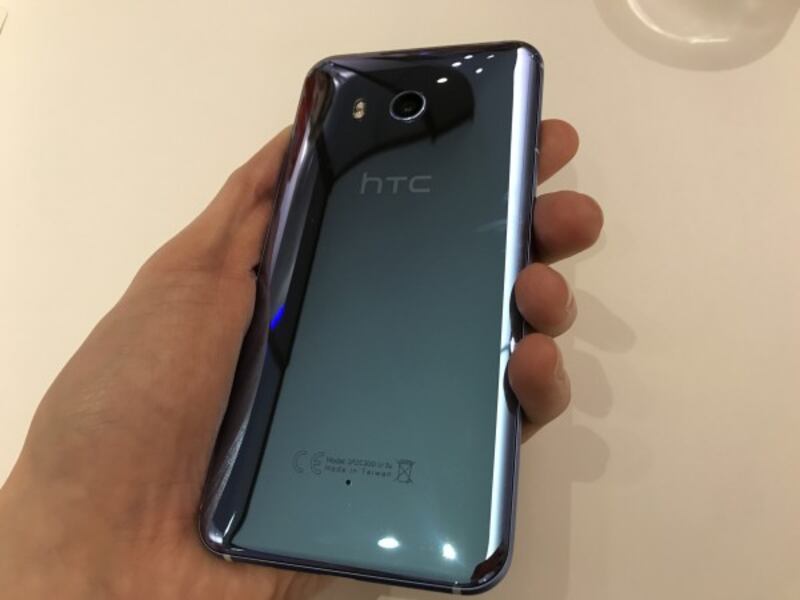
The feature responds differently depending on where you are on the phone.Squeeze while in your messages app and you launch voice dictation, while it’s also possible to re-assign squeezes to specific apps – for example to launch Facebook or another of your social media apps. Yes, it is a slightly alien process to begin with and actually remembering to use it as a shortcut doesn’t come naturally. But for quickly opening the camera and snapping photos it works perfectly – particularly when your arm is at full stretch trying to grab a group shot. Now the whole process of framing and taking the picture is possible with one hand.
Voice assistants
"We're thrilled to be welcoming Alexa as our second wake word."
— HTC (@htc) May 16, 2017
Using Edge Sense in these early moments quickly brings you in contact with Google Assistant, and since it is an Android device this makes sense.
Using the squeeze to launch the assistant also removes the need to say “ok, Google” before each voice command too – a welcome improvement to using the AI.
Sadly our encounter with the U11 is still too early to see Alexa in action on the device – Amazon’s assistant is due to arrive as part of a software update around June according to HTC.
When demoed on stage we saw that it is possible to call up Alexa using voice only – no button presses required.
If all this continues in the same vein the U11 will be well set on the AI front – but the question remains whether such a wide range of assistant software is necessary in the first place.
Early verdict
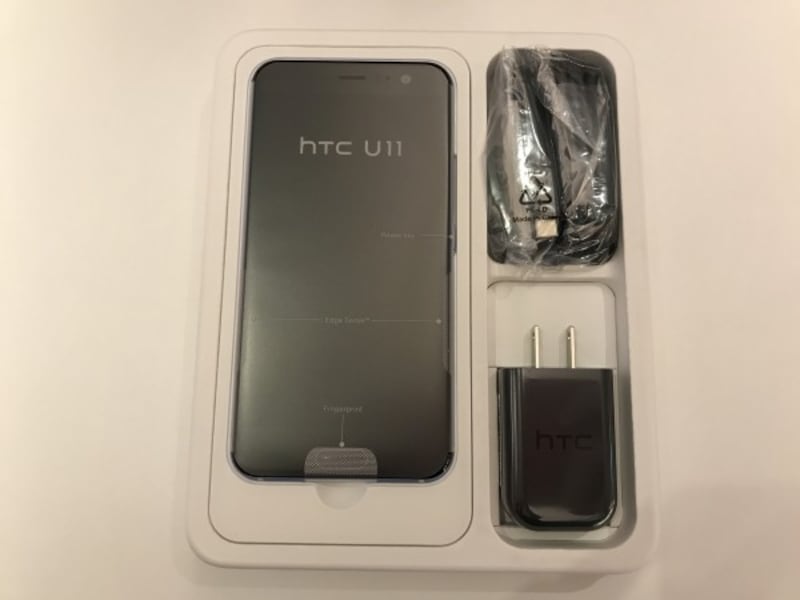
The version of the U11 used here remains on early software and isn’t the finished product, so drawing too definitive a conclusion on the U11 isn’t possible.
However, the foundations are in place, and generally there are lots of positives to see.
HTC seems to have rediscovered its good design habits – the U11 looks great – and while sounding gimmicky in theory, Edge Sense is pleasant to work and interact with.
The U11 still has a lot to prove to earning a billing of iPhone or Galaxy S8 rival, but HTC appears to have got the basics right this time around.
